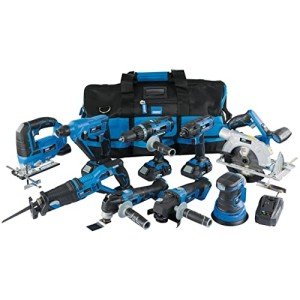What’s The Job Market For Build Your Own Tool Kit Professionals Like?
Build Your Own Tool Kit: A Comprehensive Guide
Structure your own tool kit is a vital venture for any DIY enthusiast, house owner, or enthusiast. Having an efficient and detailed tool kit not only allows you to tackle various tasks effectively but likewise conserves you money and time in the long run. This guide will check out how to Build Your Own Tool Kit (https://rentry.co/), what tools to include, and answer some often asked questions.
Why Build Your Own Tool Kit?
Producing your own tool kit offers several advantages:
- Personalization: You can tailor your toolkit to meet your particular requirements and projects.
- Quality assurance: You can choose the tools based upon individual choice for quality and resilience.
- Expense Effectiveness: You can avoid acquiring unneeded tools and concentrate on what you need.
- Knowing Experience: Building your own toolkit is an educational experience that enhances your understanding of your tools.
Essential Tools for Your Tool Kit
Developing a tool kit can appear challenging, particularly with the range of tools offered. Below is a classified list of essential tools, from hand tools to Power Tool Kits For Sale tools, to assist you start:
| Category | Tools | Function |
|---|---|---|
| Hand Tools | Screwdrivers (different sizes) | Tightening and loosening screws |
| Hammers (claw and rubber) | Driving and getting rid of nails | |
| Pliers (needle-nose, slip-joint) | Gripping, twisting, and cutting | |
| Wrenches (adjustable and socket) | Tightening or loosening bolts | |
| Tape Measure | Determining length | |
| Cutting Tools | Energy Knife | Cutting numerous materials |
| Handsaw | Cutting wood | |
| Power Tool Kits For Sale Tools | Cordless Drill | Drilling holes and driving screws |
| Circular Saw | Cutting big sheets of product | |
| Fasteners | Nails, Screws, and Anchors | Protecting products |
| Wood Glue | Bonding wood pieces together | |
| Security Gear | Shatterproof glass | Securing eyes |
| Work Gloves | Securing hands | |
| Ear Protection | Lowering noise exposure | |
| Organizational | Tool Box or Bag | Keeping tools arranged |
| Identifying Supplies | Easy identification of tools |
Developing Your Tool Kit: Step-by-Step
-
Determine Your Needs: Determine what jobs you plan to undertake. Various tasks need different tools. For example, if you’re mainly working with wood, focus on wood-cutting tools.
-
Budget plan Planning: Decide just how much you want to invest in your tools. Investing in quality tools is vital, as they can last a lifetime.

-
Purchase Tools Gradually: Start with the most vital tools and slowly add more customized tools as needed.
-
Organization: Invest in a durable tool kit or organizer. Keep regularly used tools easily accessible while saving others firmly.
-
Maintenance: Regularly clean and keep your tools to prolong their life expectancy and ensure they perform well.
Benefits of Different Tool Types
| Tool Type | Advantages | Drawbacks |
|---|---|---|
| Hand Tools | No requirement for electrical energy, portable, accurate | Can be labor-intensive |
| Power Tool Sets Tools | Conserve time and effort, increase accuracy | Needs electricity, heavier |
| Cutting Tools | Flexible and reliable for numerous materials | Requires proper handling and upkeep |
FREQUENTLY ASKED QUESTION: Building Your Own Tool Kit
1. What is the minimum number of tools I need to begin with?
A basic toolkit can start with just 5-10 vital hand tools (e.g., a hammer, screwdrivers, pliers, a measuring tape, and an utility knife) depending on your needs.
2. How do I pick the right tools?
Consider the types of projects you will undertake. Research study the tools utilized for those jobs and evaluate the quality and brand name dependability.
3. Should I buy new or used tools?
Both options have merit. New tools frequently come with warranties, while utilized tools can be more economical. Make sure used tools are in good condition and functioning well.
4. How should I keep my tools?
Keep them clean, save them properly, and examine routinely for any required repairs or replacements. Oiling and honing cutting tools will likewise improve their efficiency.
5. Can I produce a tool kit on a spending plan?
Yes! Try to find affordable tools, store during sales, or consider second-hand options. Prioritize the most needed tools first.
Last Thoughts
Building your own tool kit is not only a practical investment however also a fulfilling experience that improves your skills. It allows people to take on projects with self-confidence and efficiency. By thoroughly picking a combination of hand tools, powered tools, cutting tools, safety gear, and organizational materials, anybody can produce a customized tool kit that fulfills their unique requirements.
With a well-rounded tool kit in hand, individuals can open their creativity and see their concepts come to life, project by job. Pleased building!

